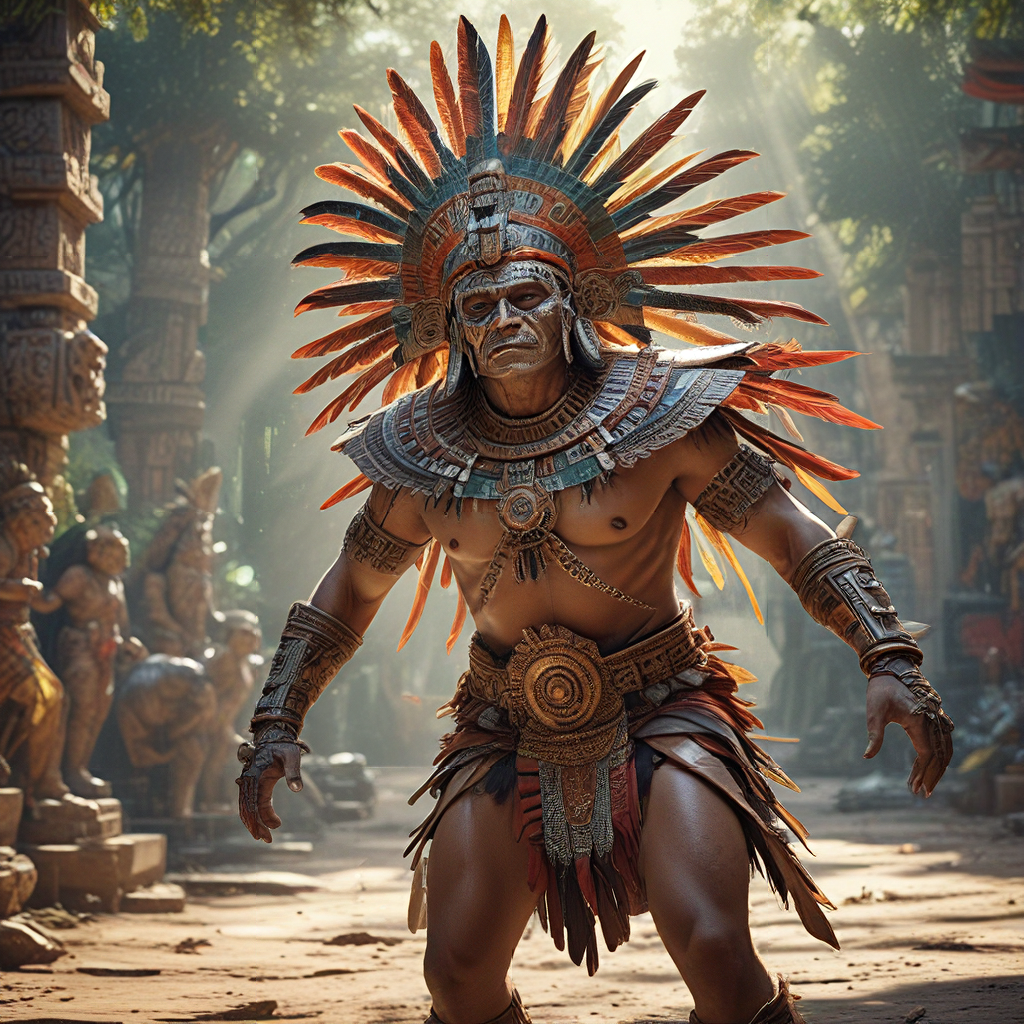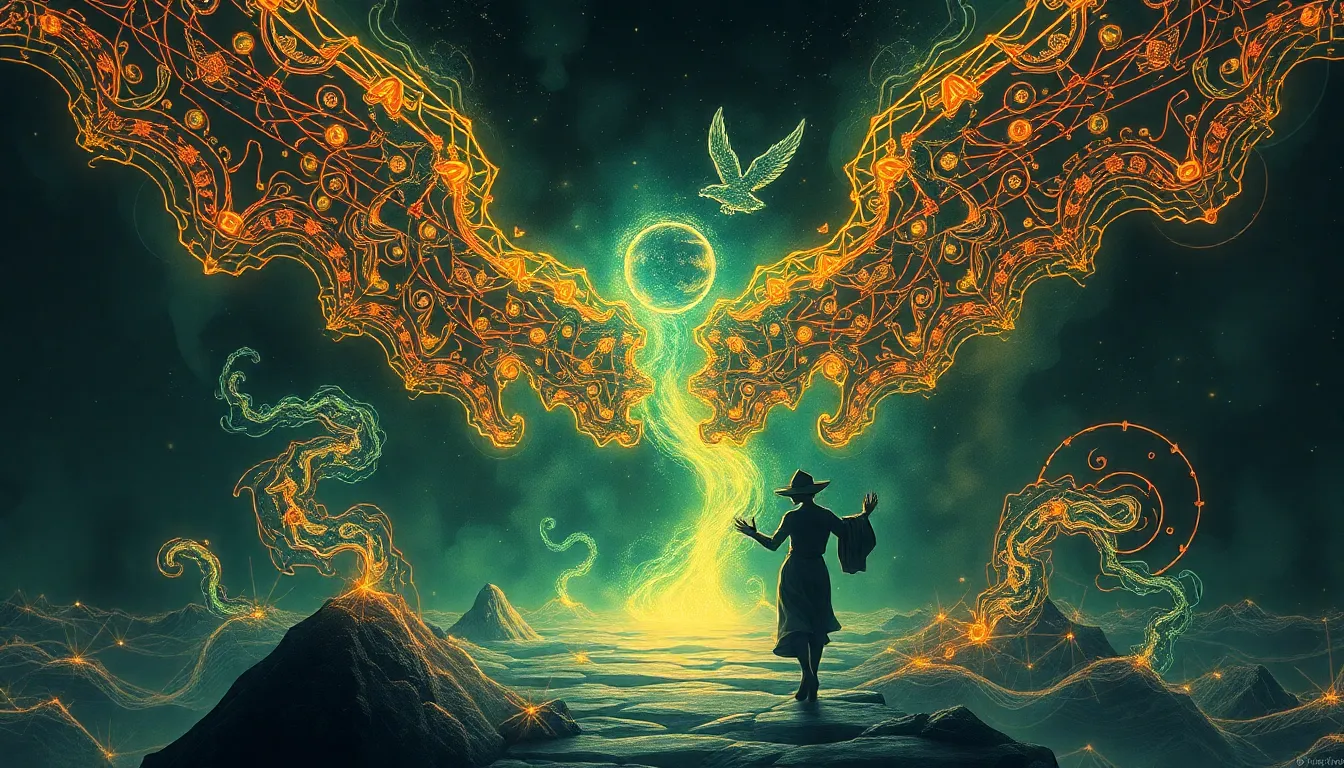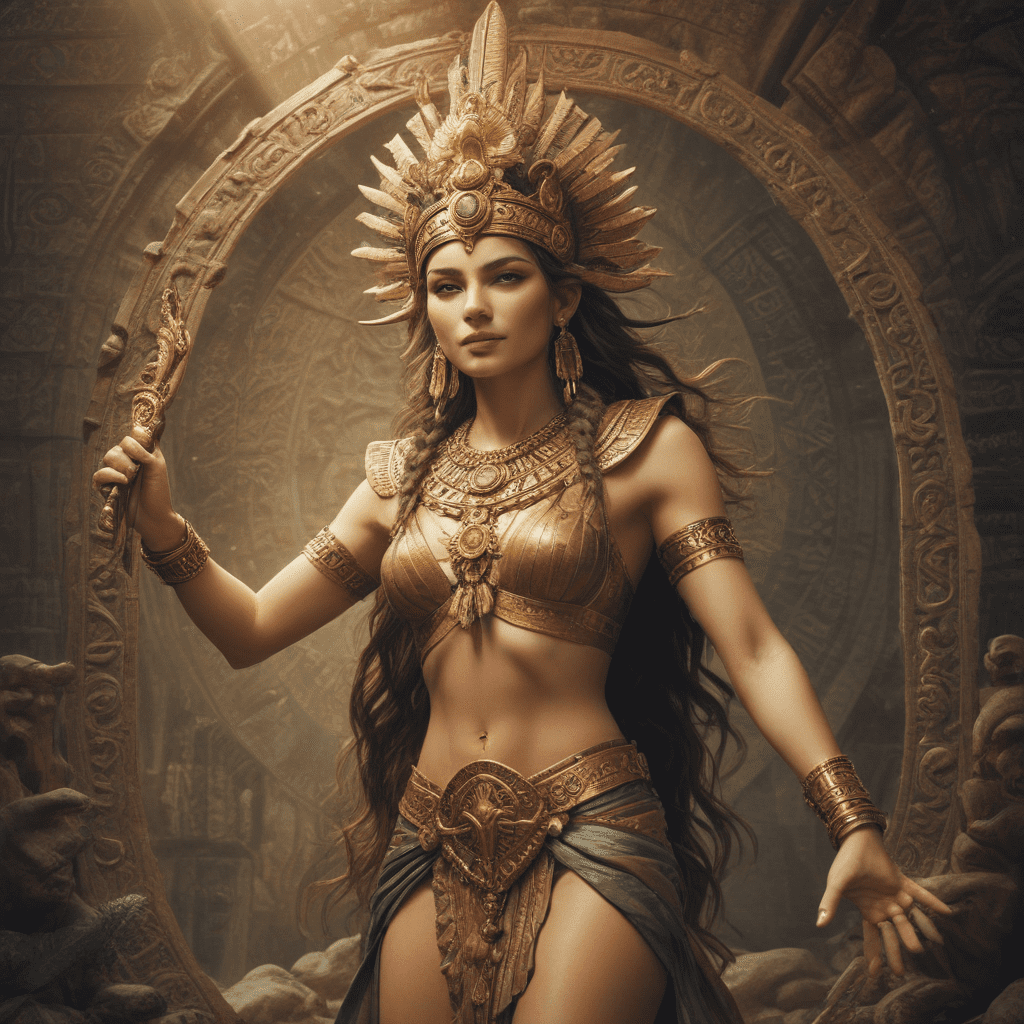The Mythical Creatures of Aztec Folklore
The Aztec civilization, known for its advanced culture and complex social structures, also possessed a rich tapestry of myths and legends. These stories, passed down through generations, provided explanations for natural phenomena, guided moral behavior, and celebrated the power of their gods. The mythical creatures that populate these stories are fascinating windows into the Aztec worldview, revealing their beliefs about life, death, and the cosmos.
Introduction to Aztec Mythology
The Aztecs, who ruled a vast empire in what is now Mexico, were deeply connected to their environment and believed in the interconnectedness of all things. Their mythology was a reflection of this belief, weaving together the natural world, human nature, and the divine. Aztec mythology is a complex system of beliefs and stories that played a crucial role in their daily lives. It informed their rituals, ceremonies, and even their social organization. The stories of their gods, goddesses, and mythical creatures provided a framework for understanding the world and their place within it.
Key Gods and Their Roles in the Aztec Pantheon
The Aztec pantheon was populated by an array of gods and goddesses, each with their own unique roles and domains. Some of the most prominent deities included:
Huitzilopochtli: The god of war, sun, and patron deity of the Aztecs. He was believed to be the one who led the Aztecs to their homeland and was the central figure in many Aztec rituals.
Tlaloc: The god of rain, storms, and fertility. He was associated with the mountains and was believed to control the life-giving water that sustained agriculture.
Quetzalcoatl: The god of wind, dawn, and knowledge. He was often depicted as a feathered serpent and was associated with the planet Venus and the arts and crafts.
Tezcatlipoca: The god of night, magic, and the north. He was a powerful and unpredictable god, often associated with death and destruction.
Xolotl: The god of lightning, monsters, and the evening star. He was also associated with death and the underworld and was believed to guide souls to the afterlife.
The Four Suns: Cycles of Creation and Destruction
A key element of Aztec mythology is the concept of the Four Suns, which describes the cyclical nature of creation and destruction. According to Aztec belief, the world had been destroyed and recreated four times, and the current era was the fifth sun. Each sun represented a different age, marked by different characteristics and events. The Aztecs believed that the fifth sun, the Sun of Movement, was destined to end in a great earthquake, after which the world would be reborn. This belief in the cyclical nature of time and existence played a significant role in shaping their worldview and their relationship with the world around them.
The Importance of Animals in Aztec Mythology
Animals played a pivotal role in Aztec mythology, symbolizing various qualities and forces. Many animals were associated with specific gods, and their qualities were often attributed to the deities themselves. For instance, the eagle, a powerful predator, was associated with Huitzilopochtli, signifying his strength, authority, and connection to the sun.
The Aztecs also believed that certain animals were intermediaries between the human world and the supernatural realm. Animals like the coyote and the owl were seen as tricksters and messengers, representing the unpredictable and sometimes dangerous forces that existed beyond human understanding.
The Serpent as a Symbol of Power and Transformation
The serpent, a creature often associated with the earth and the underworld, held a complex and significant place in Aztec mythology. It was a powerful symbol of life, death, and regeneration, embodying both destruction and creation. The serpent’s ability to shed its skin, leaving behind its old form to emerge anew, made it a powerful symbol of transformation and renewal.
One of the most important Aztec deities, Quetzalcoatl, was often depicted as a feathered serpent. This god represented knowledge, wind, and the dawn, symbolizing the potential for new beginnings and the cyclical nature of life. The feathered serpent was also associated with the planet Venus, which was believed to be a powerful force that influenced the seasons and the cycle of life and death.
The serpent is also prominently featured in the creation myth of the Aztecs, where it is believed to have played a crucial role in the creation of the world. In one version of the myth, the earth was created from the body of a slain serpent. This myth underscores the serpent’s association with fertility and the power to bring life into being.
The Jaguar and Its Association with Warriors and the Underworld
The jaguar, a fierce and powerful predator, was deeply revered in Aztec culture and was associated with both the physical and spiritual realms. Its powerful presence and deadly instincts inspired awe and respect, leading it to become a revered symbol of courage, strength, and the underworld.
In Aztec mythology, the jaguar was often connected to Tezcatlipoca, the god of the night, magic, and the north. Tezcatlipoca was a powerful and unpredictable god, associated with death and destruction. The jaguar’s connection to Tezcatlipoca reinforced its association with the underworld and the forces of darkness.
Aztec warriors, particularly those who excelled in battle, were often associated with the jaguar. They would wear jaguar skins as battle armor, adorned with jaguar teeth and claws as symbols of their courage and fearlessness. The jaguar spirit was believed to inspire bravery and fierceness in warriors, helping them overcome fear and achieve victory in battle.
The Eagle: A Symbol of Strength, Power, and the Sun
The eagle, a magnificent bird known for its strength, sharp vision, and ability to soar high above the earth, was a powerful symbol in Aztec mythology. Its association with the sun and its ability to fly above the clouds made it a representation of power, authority, and divine connection.
The eagle was closely associated with Huitzilopochtli, the god of war, sun, and the patron deity of the Aztecs. Huitzilopochtli, often depicted as an eagle warrior, possessed the strength and ferocity of the eagle. The eagle’s connection to the sun also reinforced Huitzilopochtli’s role as the sun god and his importance in the Aztec pantheon.
The eagle’s association with the sun also related to its role in the Aztec creation myth. According to legend, the god Huitzilopochtli sent an eagle to find a suitable place for the Aztecs to settle. The eagle, after a long journey, landed on a cactus, holding a snake in its claws. This event, depicted on the Aztec flag, symbolized the founding of the Aztec civilization and their connection to the sun god.
The Coyote: A Trickster Figure and Bridge Between Worlds
The coyote, a cunning and adaptable creature, held an intriguing position in Aztec mythology. It represented the unpredictable and sometimes dangerous forces that existed beyond human understanding, often acting as a trickster and a bridge between the human world and the supernatural realm.
The coyote was often depicted as a mischievous and cunning creature, capable of deceiving even the gods. Its intelligence, adaptability, and ability to survive in diverse environments made it a symbol of resourcefulness and cunning. This duality, combining both positive and negative qualities, made the coyote a complex and fascinating character in Aztec mythology.
The coyote was also seen as a messenger, able to travel freely between the world of the living and the world of the dead. This ability to navigate between realms connected the coyote to the cycle of life and death, reminding the Aztecs of the interconnectedness of all things.
Theories on the Origin of Aztec Mythology
The origins of Aztec mythology are complex and encompass a variety of theories. Some scholars believe that Aztec myths developed over time, drawing inspiration from earlier Mesoamerican cultures, like the Olmec and the Maya. These earlier cultures had established myths and legends that the Aztecs may have adapted and incorporated into their own belief system.
Other theories suggest that Aztec mythology was influenced by the Aztecs’ environment and their experiences. Their reliance on agriculture, for example, may have inspired stories about gods controlling rain and fertility, reflecting their understanding of the natural world and its influence on their lives.
Another factor that may have influenced Aztec mythology is their contact with other cultures. The Aztecs were a conquering empire, coming into contact with numerous other cultures. These interactions may have introduced new ideas and beliefs, which were assimilated into their own mythology.
The Influence of Aztec Mythology on Modern Culture
Aztec mythology continues to have a significant influence on modern culture, inspiring art, literature, and popular culture. The imagery of Aztec gods and mythical creatures remains powerful and evocative, appearing in everything from novels and movies to video games and music.
The Aztec worldview, with its emphasis on the interconnectedness of all things and the cyclical nature of time and existence, continues to resonate with modern audiences. The stories and symbols of Aztec mythology offer a glimpse into a complex and sophisticated culture, providing insights into ancient beliefs and practices.
FAQ:
- What is the significance of the serpent in Aztec mythology?
The serpent was a powerful symbol of life, death, and regeneration, embodying both destruction and creation. - How was the jaguar associated with warriors in Aztec culture?
Aztec warriors revered the jaguar and would wear their skins as armor, symbolizing their courage and strength in battle. - What is the role of the eagle in Aztec creation myth?
The eagle was sent by Huitzilopochtli to find a suitable place for the Aztecs to settle. The eagle landing on a cactus with a snake in its claws symbolized the founding of the Aztec civilization. - What does the coyote symbolize in Aztec mythology?
The coyote is a trickster figure and a bridge between the human world and the supernatural realm. It represents the unpredictable and sometimes dangerous forces that exist beyond human understanding. - Where can I learn more about Aztec mythology?
You can learn more about Aztec mythology from books, documentaries, and online resources. Be sure to look for resources from reputable sources, like museums and academic institutions.



